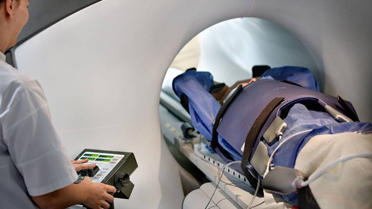Services
Image-Guided Radiotherapy
Imaging methods such as ultrasound, computed tomography (CT), magnetic resonance imaging (MRI), or positron emission tomography (PET) play an important role in diagnosis and staging, as well as in radiotherapy planning.
Since radiotherapy is used in local treatment, tumor volume is determined with these images, and plans are made to protect healthy tissues appropriately. The least complication rate is considered the basis of successful treatment.
Classically, cross-sectional imaging is used in radiotherapy and treatment planning. Subsequent treatment fractions of the patient are also determined accordingly, and daily treatment adjustments are recreated with markings on the skin or markings on assistive devices such as masks. These are controlled by 2D X-ray or digital imaging, and patients are treated. Positional deviations of a few millimeters can be seen during treatment. Within this, by considering this possibility at the planning stage, it is tried to be ensured that the target volume is covered in a reliable way during the treatment by selecting the appropriate safety margins.
Image-guided radiotherapy (IGRT) is also integrated with various imaging techniques directly into the linear accelerator device to overcome these drawbacks. By integrating the imaging directly into the linear accelerator, the patient's position, possible changes in the tumor during treatment, and possible changes in the patient's anatomy can be monitored daily. It provides immediate intervention to changes that may occur due to imaging findings during the planning phase. Treatment plans are arranged according to this new situation.
 En
En


